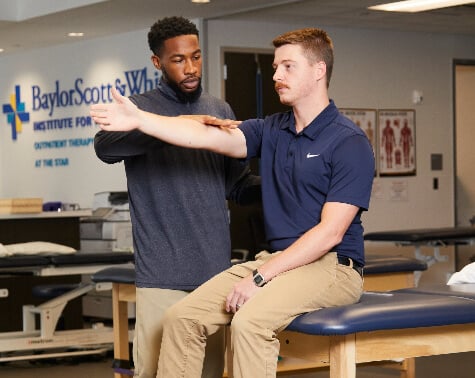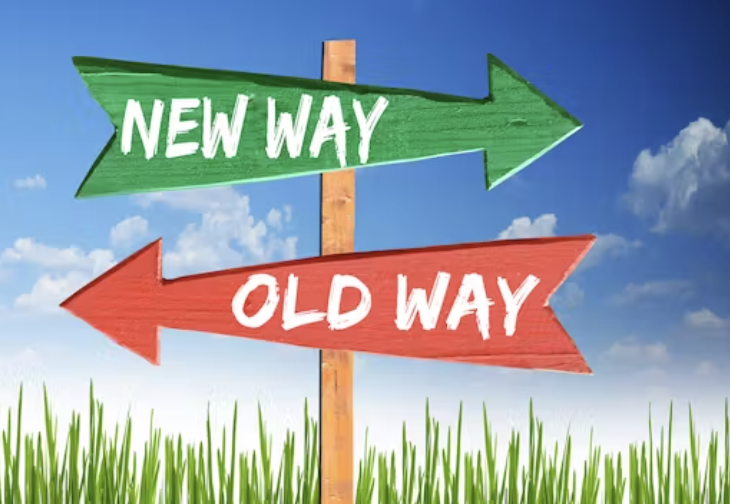Hey, once again, I appreciate you visiting my blog!
How time flies!
I started this blog two years ago to answer common questions from my early coaching business days and to help people navigate the often-contradictory information available online.
My content also aimed to appeal to those interested in evidence-based health, fitness, and physiotherapy treatments.
Now, two years in, this article marks a new direction. It touches on my experience working in two settings, describes what I believe is the necessary path for physiotherapy to progress as a profession, and explores what this means for my blog moving forward. (It's worth mentioning here that this is solely my opinion)
My Experience
Nursing home

I started my healthcare career in an aged care facility. My main day-to-day duties included delegating and training therapy associates on clinical exercise programs, conducting clinical assessments for residents, and presenting on current physiotherapy trends to colleagues. Interventions were mostly carried out in a group setting, or personalized if a resident was assessed to benefit from a one-on-one approach.
As a pre-registered physiotherapist, feelings of stagnation quickly arose; I found myself plateauing within four to five months. Work felt mundane and repetitive, I felt underwhelmed (or experienced impostor syndrome), and I had constant doubts that my efforts had any significant benefit. Most residents were chair-bound or bed-bound, and physical therapy often felt like a value-added service merely to occupy their time through cognitive engagement. This might seem pessimistic, but my reassessment results consistently showed little change; scores were mostly the same every six months. This wasn't surprising, as most clients were demented, frail, and had multiple co-morbidities.
Given this dilemma, I began to question the organization's existing clinical work processes. Armed with clinical evidence and journal papers, I brought my concerns to my senior colleagues. I also launched a journal club, attempting to translate clinical research and practices from similar facilities worldwide to improve clinical care, outcomes, and rethink how therapy could be delivered more efficiently, given budget and manpower constraints.
I had three main concerns:
- With limited human capital, how do we determine which resident warrants resource allocation (manpower and effort)?
- Is there any benefit to administering passive stretches to a resident who is already bed-bound?
- When do we decide to stop restorative approaches? For instance, I observed a physiotherapist attempting to coax a chair-bound resident to participate in mobility with equipment like a ceiling hoist, hoping they would one day regain the ability to walk, all in the guise of "therapeutic ambulation," while requiring three people to assist in that endeavor. Could these resources be better deployed elsewhere?
Unfortunately, these questions weren't addressed by senior colleagues or management, and things remained at the status quo.
That was the turning point for me.
In my opinion, innovation, design thinking, and change should be valued in every company. Artificial intelligence has demonstrably transformed existing workflows and boosted business productivity, as seen in multiple B2B startups like Scale AI and organizations successfully utilizing AI agents.
Human intelligence should be valued just as much, if not more, and implemented in ways that leverage an individual's unique strengths and values.
Outpatient musculoskeletal/orthopaedics

My next full-time role was at an outpatient clinic at a private hospital. Here, the patient demographics were mostly working professionals and older adults (who were cognitively well). In this role, I had to manage existing relationships with general practitioners (GPs) and orthopaedic surgeons, as they were the clinic's main source of warm referrals and revenue aside from the inbound generated through existing word-of-mouth and the marketing outreach done by the business team.
This environment re-ignited the purpuse that initially led me to pursue physiotherapy:
"To help people achieve their best selves and find renewed purpose after injury and illness."
Seeing patients and clients succeed through my work, expertise and the value I provide spurs me on to go further.
In this role, I had the opportunity to develop my clinical knowledge in neurological, musculoskeletal, and orthopedic physiotherapy.
In this role, I also juggled managing business relationships while ensuring my KPIs were met, and I learned to tailor my communication style to different individuals. I thoroughly enjoyed the challenge and found myself growing well into the role.
Early in the role, I consistently sought feedback from senior colleagues on managing difficult cases and navigating conversations inherent to a multidisciplinary environment. Nearly a year in, I gradually became proficient in clinical workflows and processes, often finishing outpatient clinic appointments ahead of time by adopting a "high-impact, value-first" mindset: "How can my client get the most value or the key answer for their problem within the first 20 minutes of seeing me?"
However, as this is a service business, patients are, after all, billed by contact time. Over time, a senior colleague advised me to spend more time, even if it meant providing treatments that might not be genuinely beneficial to the patient (or merely a placebo).
This, of course, stirred an internal conflict within me: if 80% of the value could be provided in 20% of the time, allowing me to prioritize other tasks, why should I not do that?
And that question, of course, led me to seek broader opportunities outside of my work as a clinician, through which role can I help myself and other companies increase their revenue and profitability while not being tied down by time restrictions?
My Path Forward
I've come to realize that a crucial path for the profession to move forward is to embrace rigorous research, ambiguity, and change (true innovation).
While I agree that client expectations are part of an evidence-informed framework, allowing personal beliefs, emotions, or biases to dictate treatment choices, or worse, misleading clients about a treatment's true effects, ultimately undermines the entire profession. This was particularly apparent among those who have been in the field for a while.
Given this analysis and my insights, I've decided to step out of full-time practice (opting to practice freelance for now) and instead, keenly observe what becomes of the profession as it stands—or evolves, who knows?
What do you think is the most critical step for the physiotherapy profession right now? I'd love to hear your thoughts in the comments below.
Thanks for reading!
Cheers,
Marcus
Also, I'm going to (yes, shamelessly) plug an ad for myself here;
★ I'm on a job search for sales or customer success (CS) roles in high-growth, innovative technology companies that challenge the status quo and have a "high-impact, value-first" mission of providing the best products and customer service to their customers.
If that resonates with you, or you know someone who is hiring for such a role, please reach out. I'd love to have a chat on how I can contribute to the growth of your company.


